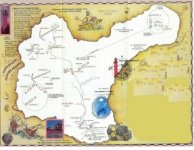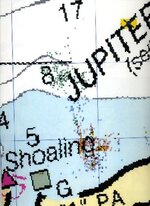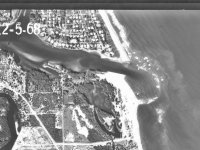capt dom
Hero Member
We have been excavating at the Jupiter Historic Shipwreck site going on 23 years now... And the question remains:
"Just Where is the Rest of the Ship?"
There have been a lot of great discoveries but the yet definitively identified - vessel and its enigmas
still remain to be resolved. Is it in fact the San Miguel Archangel? How many survivors were there?
What happened to them? Why are individual ballast stones found occasionally alone, but with coins stuck
to them? How deep can any blow boat actually dig? These and many other intriguing questions remain
to surface and be answered. This posting hopes to be a forum where all of you may participate with your
practical experience, knowledge and or ideas...
So lets cast off and let creative discussion and ideas be shared...
And remember - there is no such thing as a stupid question from a sincerely genuine source
"Just Where is the Rest of the Ship?"
There have been a lot of great discoveries but the yet definitively identified - vessel and its enigmas
still remain to be resolved. Is it in fact the San Miguel Archangel? How many survivors were there?
What happened to them? Why are individual ballast stones found occasionally alone, but with coins stuck
to them? How deep can any blow boat actually dig? These and many other intriguing questions remain
to surface and be answered. This posting hopes to be a forum where all of you may participate with your
practical experience, knowledge and or ideas...
So lets cast off and let creative discussion and ideas be shared...

And remember - there is no such thing as a stupid question from a sincerely genuine source





 Or did the ballast pile or some of the ballast pile sit up near the original upper deck impact point and did later storm events and riptide wave actions and major storm events break up the ballast pile and drag them off shore
Or did the ballast pile or some of the ballast pile sit up near the original upper deck impact point and did later storm events and riptide wave actions and major storm events break up the ballast pile and drag them off shore








